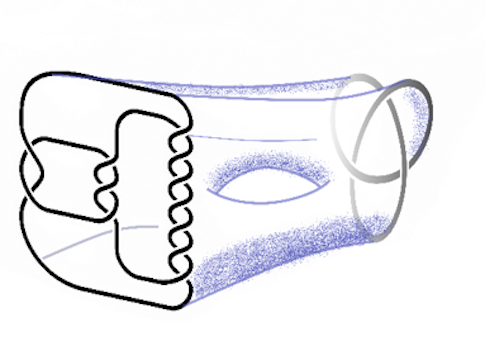Foundation Announces the Simons Collaboration on New Structures in Low-Dimensional Topology
The Simons Foundation is pleased to announce the establishment of the Simons Collaboration on New Structures in Low-Dimensional Topology, directed by Aaron Lauda of the University of Southern California.
In Einstein’s theory of general relativity, the shape of spacetime itself plays a critical role in our understanding of gravitation. Mathematically, spacetime is described by three spatial coordinates that describe position and one coordinate for time; these coordinates smoothly vary as we move from one point to another, what mathematicians call a 4-dimensional manifold, or 4-manifold. Low-dimensional topology is the study of 3- and 4-manifolds, aiming to understand the structure that remains as the manifolds are stretched or deformed without creating tears, kinks or holes.

The study of low-dimensional topology has led to tremendous activity and cross-fertilization of ideas between mathematics and theoretical physics. One of the most important tools comes from the field of gauge theory, a technique that has proven remarkably powerful in theoretical physics in describing fundamental forces of nature. In the 1980s, it became clear that gauge theory also provided a tool to study low-dimensional topology, providing ways of distinguishing different 4-manifolds, or what mathematicians would call 4-manifold invariants. These tools have since been highly refined and harvested to great effect, leading to tremendous developments in mathematics.

Despite the many successes these gauge theoretic invariants have had in the past 30 years, the tools used to study 3- and 4-manifolds have advanced very little. However, we are currently at a precipice where ideas from disparate areas of mathematics and theoretical physics foreshadow the existence of a new generation of tools, promising new and more powerful invariants to better probe the structure of smooth topology in 3- and 4-dimensions. As with the gauge theoretic tools, it is anticipated that this new wave of techniques will lead to the resolution of fundamental open problems extending far beyond the localized study of low-dimensional topology. The Simons Collaborations on New structures in Low-Dimensional Topology brings together a team of researchers, covering a variety of different perspectives, who can synthesize the interconnections between fields and overcome the barriers preventing progress in uncovering the next generation of tools in low-dimensional topology.


